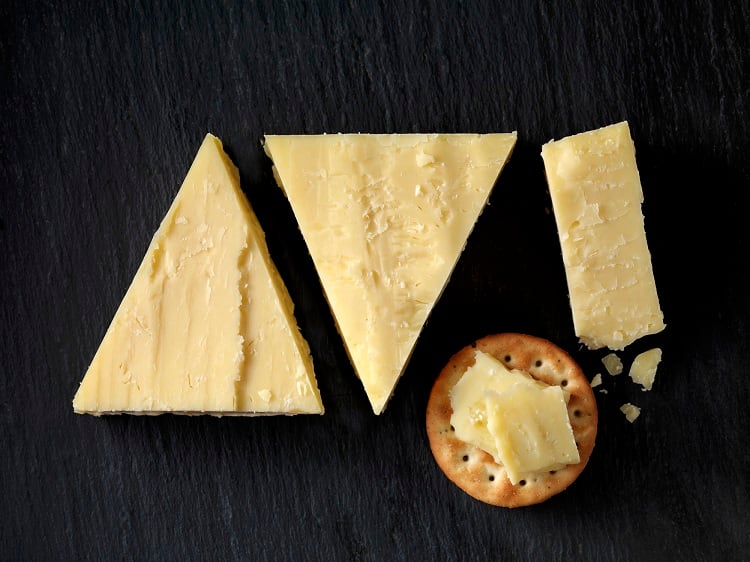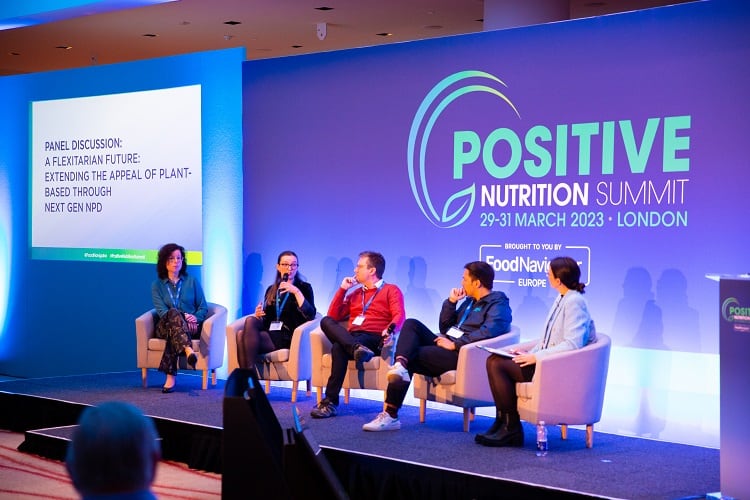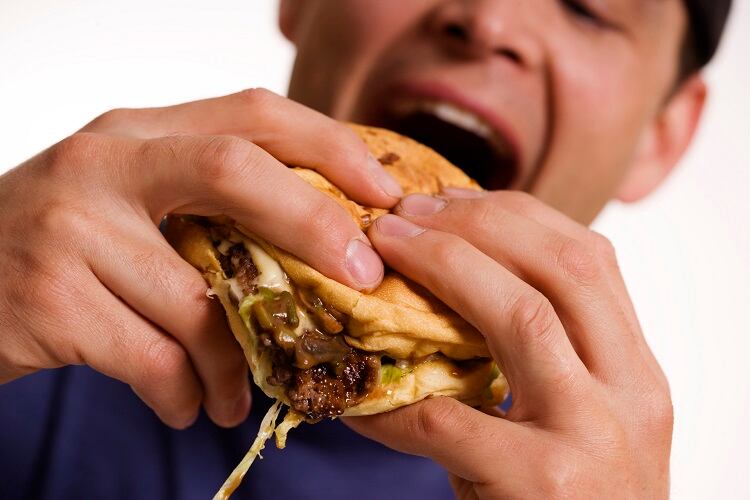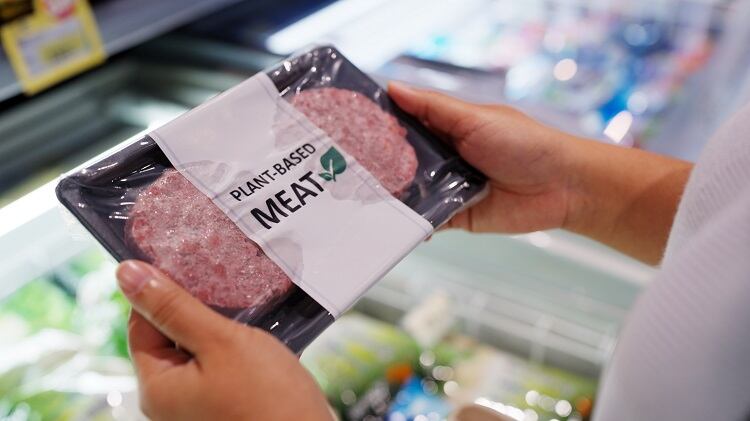Substituting intensively farmed livestock with alternative protein production is a good move for environmental sustainability.
Globally, livestock production contributes an estimated 18% of anthropogenic greenhouse gas (GHH) emissions, is a major contributor to water stress, and a key driver of deforestation. In the biodiverse Amazon rainforest, 70% of previously forested land is now occupied by pastures to accommodate the expansion of livestock production.
But achieving a true disruption of meat and dairy markets is reliant on consumer acceptance. Meat- and dairy-free alternatives need to not only hit the mark on sustainability, but also on organoleptic profile, nutrition, and affordability.
The next generation of alternative protein innovators believe they have the solutions to overcome pain points in current plant-based offerings – if they can get to market.
Addressing organoleptic pain points
Within the organoleptic spectrum – ranging from taste and appearance to texture and smell – two are particularly relevant when it comes to consumer acceptance.
“Taste and texture are two key components, which are important for consumers [when deciding] to rebuy plant-based or other alternatives,” according to Renske Janssen, project manager, protein technology at NIZO Food Research in the Netherlands.
Of course, much progress has been made in improving the taste and texture of meat and dairy analogues to date. “Ten years ago, the meat alternatives in the supermarket were not so tasty. They were eaten, but not [to the same extent],” she told delegates at FoodNavigator’s recent Positive Nutrition Summit in London.
Since that time, R&D efforts have served to improve taste and texture. “But there is still a lot of room for improvement,” said Janssen.
Jessica Thorne, corporate affairs director at seaweed ingredients supplier OCEANIUM agrees that taste will forever be a key driver of plant-based uptake. Seaweed can play a role here, in imparting ‘umami’ flavours in meat-free analogues, for example.
But it’s not just about taste, she explained at the Positive Nutrition Summit. Colour, too, is critical in the purchase decision process. “Particularly for plant-based meats and seafood, replicating the colour and the experiential profile that customers want when replicating traditional meat products [is important, and] is something we’re working on as well.”

Colour is an area of focus for Belgian start-up Paleo, which via precision fermentation technology, is making the heme-binding protein myoglobin (an iron-rich protein found in animal muscle) from yeast. When added to a plant-based matrix, Paleo’s myoglobin can improve its colour – as well as its taste and nutritional value, we were told.
“The most common phase that I hear when I have contact with representatives from the food industry is: ‘taste is king’. So that’s very clear,” co-founder and CEO Hermes Sanctorum told delegates at the event. But achieving a ‘meat-like’ colour is important, and ‘very challenging’, too, he stressed.
As Paleo claims its myoglobin is identical to the heme-binding proteins found in animals, the start-up says the ingredient can helps to mimic the colouring of conventional animal proteins.
Improving nutrition with next-gen ingredients
Nutrition in current plant-based meat and dairy analogues is another sticking point.
Last year, research out of Sweden came to light questioning the bioavailability of micronutrients in plant-based meat analogues. The researchers found that while many meat substitutes are high in micronutrients such as iron, they are often found in a form that cannot be absorbed
“This is because these meat substitutes [contain] high levels of phytates, antinutrients that inhibit the absorption of minerals in the body,” explained study lead author Celilia Mayer Labba at the time.
Paleo’s Sanctorum, aware of the absorbability challenge, is proud that the start-up’s myoglobin provides ‘bioavailable iron’. “It can be challenging for vegans, vegetarians, or people that eat little meat…to get enough iron intake,” he explained, suggesting that Paleo can help improve the nutritional value of plant-based meat analogues.
“Our myoglobin is exactly the same as in meat and fish. We’ve tested it, and it has the same bioavailability. It’s identically the same structure and sequence…
“Of course, we know there is more in meat than just myoglobin, but myoglobin is a very important ingredient…If you add myoglobin to plant-based food, you solve the iron issue.”

Seaweed-based ingredients can also add a nutritional boost to meat and dairy analogues, according to OCEANIUM’s Thorne. Seaweed is not novel, nor is it new to the human diet. People have been consuming seaweed in varying forms for thousands of years, but food exportation is helping to increase awareness around its consumption in other cultures.
“Red seaweeds are particularly high in protein,” explained Thorne. And depending on the species, seaweed can be high in zinc, magnesium, and source of vitamin B12. “There are numerous other minerals as well, which we’re looking to valorise and extract.”

In some plant-based categories, there are huge variances in nutritional quality. In plant-based cheese, for example, those produced via a nut fermentation process tend to have a higher protein content, explained NIZO’s Janssen. But others, based on oil and starch, hardly contain any protein. “Nutritionally, they’re not comparable at all to milk cheese,” we were told.
But, there are signs of progress. The first plant-based milk alternatives to come on the market ‘hardly contained any proteins at all’, said the protein expert. “Now, in recent years, you see a lot of newer types of plant-based milks increasing their protein content and are more nutritionally comparable to real milk.”
From scaling to regulation: Challenges on the road to market
Unlike the current plant-based offerings in Europe, the next-generation of alternative protein innovators of often working with novel ingredients. This can present several challenges, including achieving commercial scale, cost parity, and regulatory approval.
Scalability is a consideration for Belgium-based Paleo. Currently, the start-up is developing its myoglobin in ‘small batch volumes’. That process ‘went quite fast’, Sanctorum explained. “And that’s the advantage of yeast – it is a very known organism. Of course, you have to tweak it to make sure it creates the protein you [want], but it’s less complicated than cultured meat, for instance.”
That being said, Paleo still needs to test its production in larger batches to produce larger volumes, which is currently underway. But scalability is not the challenge facing the fermentation industry, believes CEO Sanctorum. “It’s capacity. There are many companies that will need fermenters to produce these compounds. At this point, we don’t have the capacity worldwide to build [them] as projected.”
As to achieving cost parity, Paleo sees itself in a fortunate position given the small amount of myoglobin required in plant-based matrices. “We have an advantage, because [the myoglobin] is very functional…Myoglobins are only in very small percentages in conventional meat, when you add them to a plant-based product, you need to add less than 1%...So even if our final product is a bit expensive, you have a low inclusion [percentage] so the impact on the final price is limited.”
In precision fermentation-derived dairy, on the other hand, the percentage of protein required is much greater. Those players face a bigger challenge in achieving cost parity, we were told.
From a regulatory perspective, being subject to European Novel Foods regulation (which is attracting fewer cellular agriculture-derived novel food applications than other jurisdictions) is ‘frustrating’, said Sanctorum: “It’s a bit of a black box, and that’s annoying.”
It’s a bit frustrating as a Belgian start-up that for sure, we won’t start our commercialisation in Europe or in Belgium. It will be somewhere else, due to [differences in regulatory] procedures.”
Fungi-based meat alternative start-up Libre Foods is ‘hopeful’ regulation will work in its favour, but at the same time, suggested that industry doesn’t have time to wait for stringent, slow processes.
Regulation was also a ‘big driver’ behind Libre Foods’ NPD strategy, founder and CEO Alan Iván Ramos explained at the Positive Nutrition Summit. The company’s first product to market is a mushroom/plant-based protein hybrid bacon, founded on the fruiting body part of fungi. Ramos describes the ‘fruiting body’ as ‘basically any mushroom seen in the supermarket’ – it’s a known entity and not subject to Novel Foods regulation.
In parallel, the start-up its building its technology platform based on mycelia – the root-like structure of fungi – not all strains of which are approved in the EU. This strategy means that Libre Foods can get on the market as quickly as possible, while simultaneously working on the regulatory process for mycelia-based products.
Price parity is ‘definitely’ the objective for Libre Foods. After working through barriers to taste and texture, the company is focused on scaling up and bringing cost down ‘as much as possible’. “That’s been our benchmark from the beginning. In order for us to compete, we have to be accessible.”

As to what the future holds, OCEANIUM’s Thorne said she hopes the diversity of products available to consumers will increase over the coming years, as well as their availability.
NIZO’s Janssen, too, is ‘very hopeful’ for the future. “I hope that in five years we will have more diverse choices…not just in dairy and meat alternatives, but in other products which are easy and convenient for consumers.”



